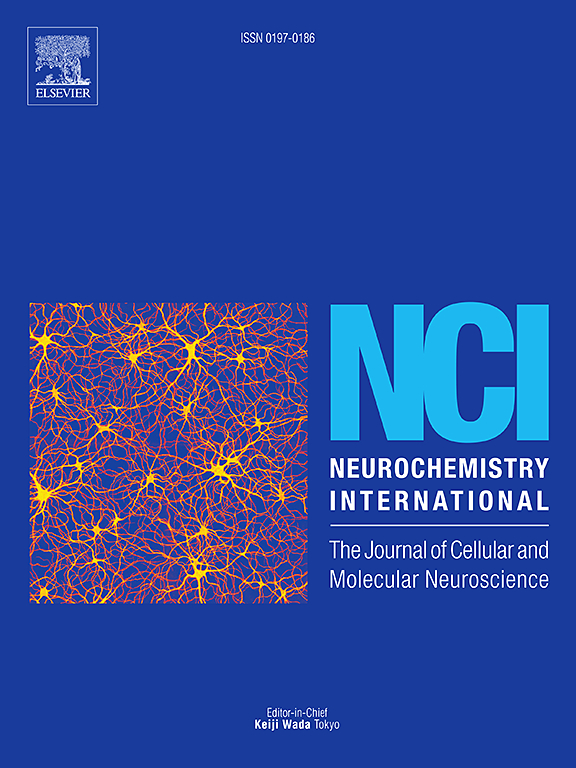缺血性脑卒中中的星形细胞-神经元代谢串扰。
IF 4
3区 医学
Q2 BIOCHEMISTRY & MOLECULAR BIOLOGY
引用次数: 0
摘要
缺血性中风(IS)是由大脑血液供应暂时或永久性阻塞引起的。血流量减少导致葡萄糖和氧气输送中断,从而损害能量代谢。IS的一个重要病理特征是能量代谢受损。星形胶质细胞是大脑中最常见的神经胶质细胞,位于神经元和微血管之间。由于其特殊的解剖位置,它们在调节脑血流量(CBF)和代谢中起着至关重要的作用。星形胶质细胞比神经元更能抵抗缺氧和缺血。此外,星形胶质细胞对维持神经元的代谢和功能至关重要。因此,关于神经能量学的“神经中心”观点正逐渐让位于考虑星形胶质细胞和神经元之间代谢相互作用的更全面的观点。由于梗死核心区域的神经元无法进行氧化代谢,因此本综述的重点是梗死周围区域的神经元。我们将使用三种不同类型的代谢物:乳酸、脂肪酸(FAs)、氨基酸以及线粒体来研究IS急性期星形胶质细胞和神经元的代谢串扰。IS后,梗死周围区的星形胶质细胞可以产生乳酸、酮体(KBs)、谷氨酰胺(Gln)和l -丝氨酸,并将这些代谢物与线粒体一起运送到神经元。这一过程有助于维持神经元的能量需求,保持其氧化还原状态,并调节神经递质受体的活性。本文章由计算机程序翻译,如有差异,请以英文原文为准。

Astrocyte-neuron metabolic crosstalk in ischaemic stroke
Ischemic stroke (IS) is caused by temporary or permanent obstruction of the brain's blood supply. The disruption in glucose and oxygen delivery that results from the drop in blood flow impairs energy metabolism. A significant pathological feature of IS impaired energy metabolism. Astrocytes, as the most prevalent glial cells in the brain, sit in between neurons and the microvasculature. By taking advantage of their special anatomical location, they play a crucial part in regulating cerebral blood flow (CBF) and metabolism. Astrocytes can withstand hypoxic and ischemic conditions better than neurons do. Additionally, astrocytes are essential for maintaining the metabolism and function of neurons. Therefore, the "neurocentric" perspective on neuroenergetics is gradually giving way to a more comprehensive perspective that takes into account metabolic interaction between astrocytes and neurons. Since neurons in the core region of the infarct are unable to undergo oxidative metabolism, the focus of attention in this review is on neurons in the peri-infarct region. We'll go over the metabolic crosstalk of astrocytes and neurons during the acute phase of IS using three different types of metabolites: lactate, fatty acids (FAs), and amino acids, as well as the mitochondria. After IS, astrocytes in the peri-infarct zone can produce lactate, ketone bodies (KBs), glutamine (Gln), and l-serine, shuttling these metabolites, along with mitochondria, to neurons. This process helps maintain the energy requirements of neurons, preserves their redox state, and regulates neurotransmitter receptor activity.
求助全文
通过发布文献求助,成功后即可免费获取论文全文。
去求助
来源期刊

Neurochemistry international
医学-神经科学
CiteScore
8.40
自引率
2.40%
发文量
128
审稿时长
37 days
期刊介绍:
Neurochemistry International is devoted to the rapid publication of outstanding original articles and timely reviews in neurochemistry. Manuscripts on a broad range of topics will be considered, including molecular and cellular neurochemistry, neuropharmacology and genetic aspects of CNS function, neuroimmunology, metabolism as well as the neurochemistry of neurological and psychiatric disorders of the CNS.
 求助内容:
求助内容: 应助结果提醒方式:
应助结果提醒方式:


